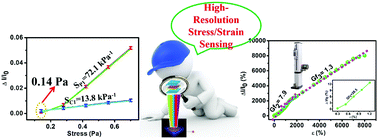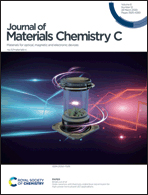A flexible bifunctional sensor based on porous copper nanowire@IonGel composite films for high-resolution stress/deformation detection†
Abstract
Flexible wearable electronics, including monitors, supercapacitors, sensors and batteries, especially stress or strain sensors, have attracted extensive discussion and attention, due to their distinctive characteristics such as high sensitivity and ultra-flexibility, and their broad application prospects in artificial intelligence (AI), robot sensing interfaces, and also high precision medical instruments. However, a narrower deformation rate, higher latency, and even counterfeit sensitivity severely limit their sensing performance and popularity in practical applications. Herein, a new bifunctional sensor based on excellent conductive and biocompatible porous copper nanowire (CuNW)/IonGel (PCI) composite films introducing a polystyrene (PS) microsphere template is developed. The sensor exhibits unparalleled mechanical properties (the maximum extension rate is 8000%), as well as omnidirectional, arbitrary angle/dimension extension, distortion and bending. This piezo-resistive sensor also features a convincing ultra-high sensitivity (S, 72.1 kPa−1) and gauge factor (Gf, 28.5) with negligible hysteresis under repeated cycle tests. Furthermore, compared to the same type of sensor, the limit of detection (LOD) is drastically reduced (merely 0.14 Pa). Undoubtedly, it is promising for high-resolution strain/stress-sensing electronic skin (e-skin) and green super-stretched electrodes.



 Please wait while we load your content...
Please wait while we load your content...